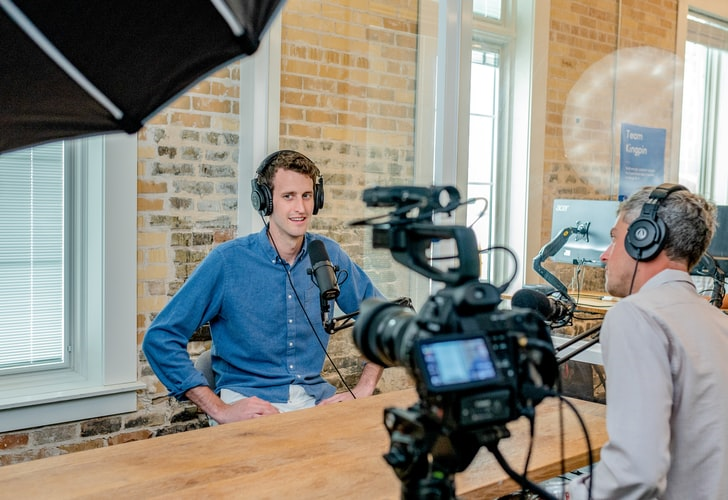Most of us have come across a blog post at some point in our time on the Internet – you’re reading one right now! They’re a great way to share opinions, discuss topics, and express ourselves. With how easily accessible they are for both authors and readers, it’s no surprise that blogging is a popular and widespread function used by individuals and organizations alike. But most people overlook (or maybe aren’t even aware) of a subsection of blogging that’s gained massive traction over the past few years.
Microblogging has quickly expanded to become a popular option for sharing content across the digital landscape, and with good reason – it’s easy, effective, and allows people to engage in a shared space similar to blogs, but in much more manageable, time-efficient sections. As a result, more and more media companies have realized the benefit of microblogging, and are using it to engage with their audience within their own platforms.
An incredibly effective way to do so is by covering live events through frequent, rolling updates on their platform. Live events usually attract significant interest, so providing coverage can help you gain a good amount of attention and engagement. Read on to learn more about why using microblogging to cover live events could be a great option to drive community engagement, especially when supported with the right tools and functions.
What is microblogging?
This is probably the first question that some may want to ask. So what exactly makes microblogging different from regular blogging, and why does it make a difference?
In simple terms, microblogging is about creating shorter, more succinct content for audiences that can be consumed quickly. Compared to regular blogs, audience members will spend much less time on individual posts, so microbloggers usually make up for this by making more frequent updates to their pages so audiences can remain engaged.
Compared to blogs, microblogging involves much more picture and video content, which can be a great way to stimulate audiences without writing in detail. Twitter, Instagram, and Tumblr are some great microblogging examples. As the saying goes, a picture is worth a thousand words!
Advantages of microblogging
Of course, microblogging has some definite advantages over the traditional blogging format, which is why advertisers, media outlets, and big businesses are jumping on the bandwagon. Here are some of the biggest reasons why microblogging is worth it.
Efficiency
Since microblogs are based around shorter, less detailed chunks of content, they take a lot less effort to produce big results. For example, you can prepare several microblog posts in the same amount of time it takes to write and put up a blog post of standard length. There’s clearly a tremendous amount of value to be derived from microblogging just from how easy it is to prepare content for the format.
Mobile-friendly
It’s official; more people spend their time browsing the Internet on mobile devices than on desktops or laptops. This means that if you’re looking to engage an audience, your content needs to be mobile-friendly. Blogs can be a chore to read through on mobile devices, and scrolling through walls of text is just as appealing as you’d expect (it isn’t).
This is where microblogging and its focus on visual content shine – your audience will happily view videos and interact with exciting photos, since they translate much better onto mobile platforms. In addition, the shorter content segments often mean that you can prepare posts that can be taken in with little to no scrolling at all, which is great for the quick, concise updates that are standard during live event coverage.
Flexibility
Since your content is produced in smaller, more frequent intervals, microblogging allows you to change the subject and direction of your content on the fly. This is a lot easier on your content producers since each post usually takes minutes to conceptualize and write out. In addition, covering new developments, reacting to events, and responding to audience interests are effortless on a microblogging website.
Covering events through microblogging
We’ve gone over the benefits of microblogging, and its clear that the time-limited and fast-paced nature of live events make it very hard to cover them effectively through regular blogs. Microblogging is clearly the way to go, and some of our readers may already have theirs up and running. However, some important steps need to be followed if you want to effectively do live coverage and drive engagement. Here are some of the best tips to make your next event coverage session a huge success.
Prepare and confirm functionality
Before the event starts, you’ll want to make sure that your platform doesn’t have any outstanding issues or bugs that might end up being a problem during the live coverage. Finding and sorting these problems out beforehand will save you a lot of trouble down the line and make your live microblogging coverage a much smoother experience.
Take pictures
The strength of microblogging stems from the added engagement driven by graphic content. While it’s acceptable to provide only text based post updates on your feed, you’ll find it much easier to break up the monotony of your text wall with photos or images of the event itself. If the event is live, consider having someone attend and take pictures. If you’re covering a streamed event, take screenshots of memorable moments and pair them with your text posts for great effect.
Talk to your audience
Your audience will be having conversations based on the event; you should join in as well! Have someone ready to reply to comments, like popular opinions, and generally promote discussion. Not only will you spark added activity and continue to drive engagement, but you’ll be able to show that your platform is involved within the community and cares about what the audience has to say.
Be ready to moderate
Not all discussion around microblogging coverage will be healthy. Plenty of trolls and toxic individuals will likely attend the event, more than happy to spread negativity, toxic thinking, and outright inappropriate content. If using automatic moderation, make sure your algorithms are working as intended, and it’s highly recommended you use live moderators to cover all the bases and put out fires as they start.
Endnote
When done right, microblogging to cover live events can help media platforms boost their reputation as a trusted source of information and discussion. But using the right tools and taking the proper steps to prepare for your coverage is just as important. Our solutions suite offer several practical and highly effective tools that can be used to enhance your next live event blog. If you’re interested in learning more about what we can do for you, contact us today to schedule a demo, and elevate your next live blog event from good to extraordinary.








